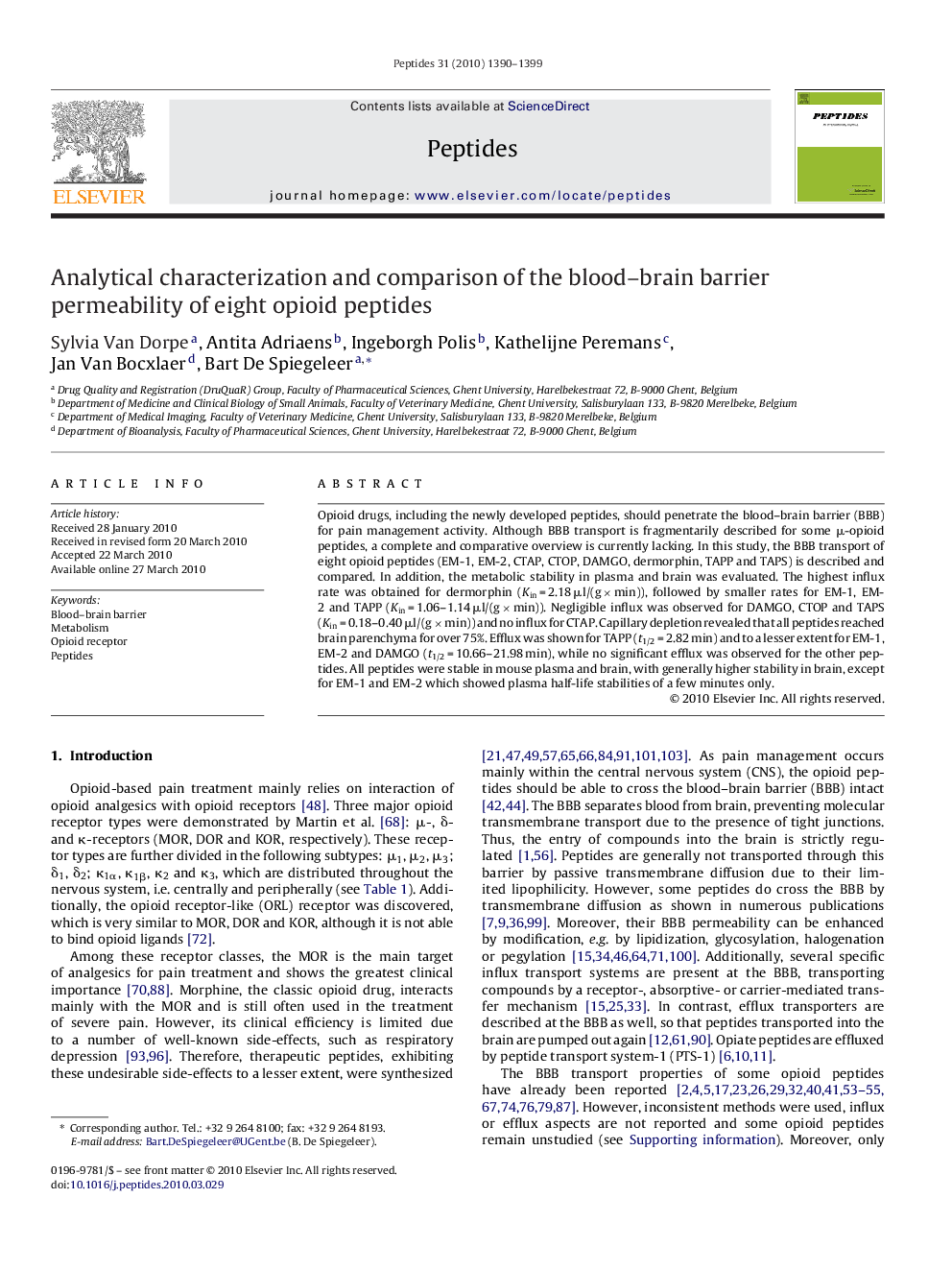| Article ID | Journal | Published Year | Pages | File Type |
|---|---|---|---|---|
| 2006633 | Peptides | 2010 | 10 Pages |
Opioid drugs, including the newly developed peptides, should penetrate the blood–brain barrier (BBB) for pain management activity. Although BBB transport is fragmentarily described for some μ-opioid peptides, a complete and comparative overview is currently lacking. In this study, the BBB transport of eight opioid peptides (EM-1, EM-2, CTAP, CTOP, DAMGO, dermorphin, TAPP and TAPS) is described and compared. In addition, the metabolic stability in plasma and brain was evaluated. The highest influx rate was obtained for dermorphin (Kin = 2.18 μl/(g × min)), followed by smaller rates for EM-1, EM-2 and TAPP (Kin = 1.06–1.14 μl/(g × min)). Negligible influx was observed for DAMGO, CTOP and TAPS (Kin = 0.18–0.40 μl/(g × min)) and no influx for CTAP. Capillary depletion revealed that all peptides reached brain parenchyma for over 75%. Efflux was shown for TAPP (t1/2 = 2.82 min) and to a lesser extent for EM-1, EM-2 and DAMGO (t1/2 = 10.66–21.98 min), while no significant efflux was observed for the other peptides. All peptides were stable in mouse plasma and brain, with generally higher stability in brain, except for EM-1 and EM-2 which showed plasma half-life stabilities of a few minutes only.
